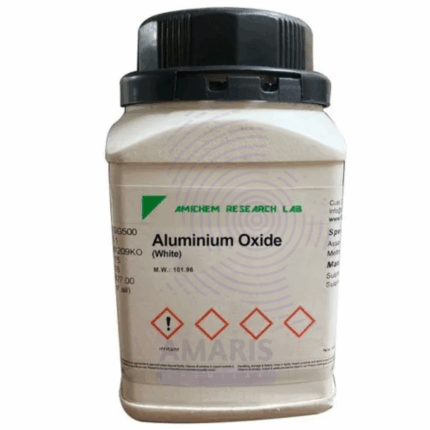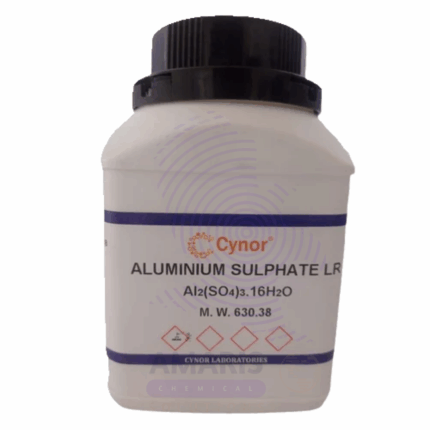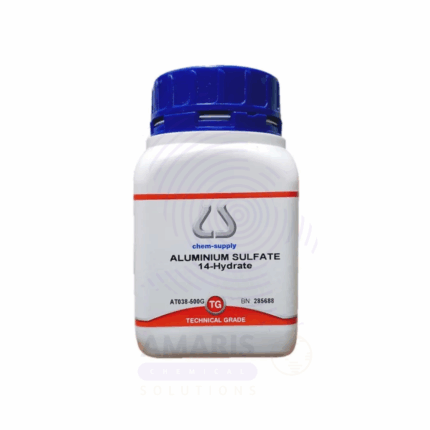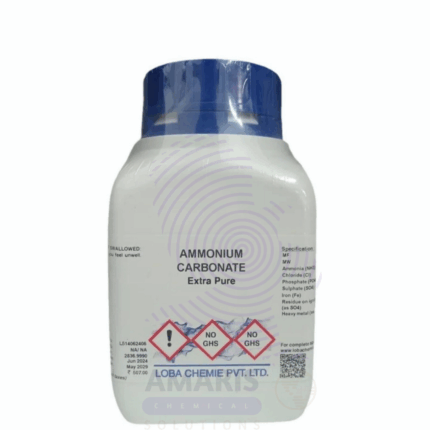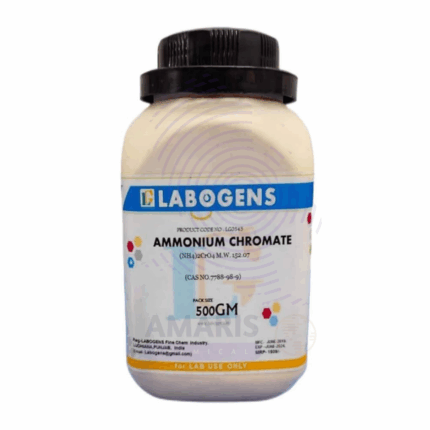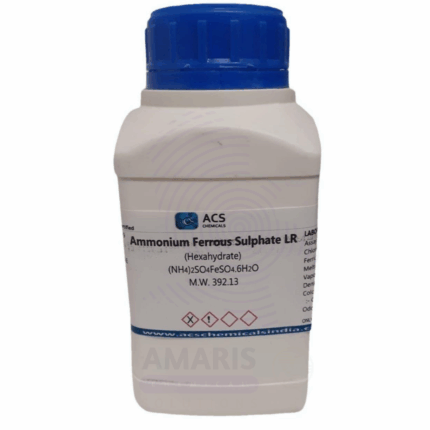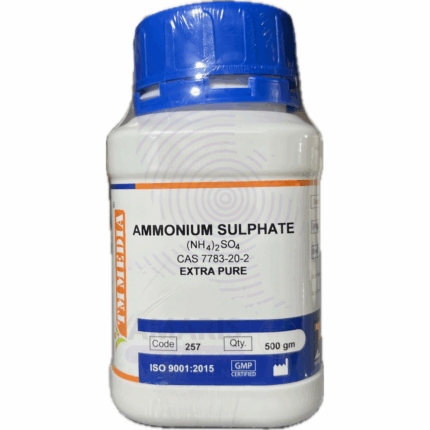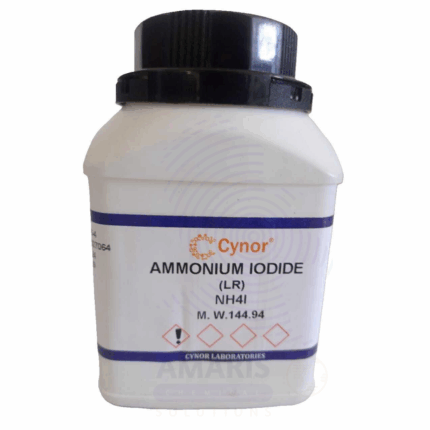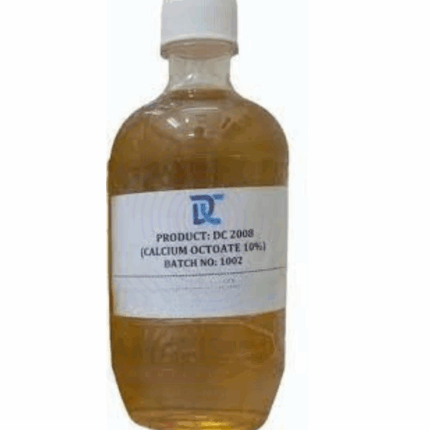
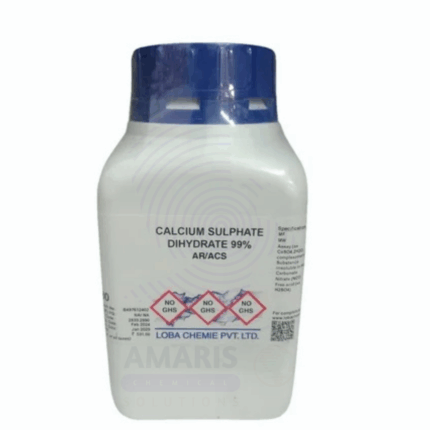
Calcium Oxide lumps Extra Pure
$ 17.00 Original price was: $ 17.00.$ 16.80Current price is: $ 16.80.
Calcium Oxide lumps Extra Pure is a high-purity, white to grayish solid commonly known as quicklime, widely used in laboratory settings for its strong basic and dehydrating properties. In analytical and preparative chemistry, it is utilized for drying organic solvents and gases, preparing calcium hydroxide solutions, and studying exothermic hydration reactions. Its reactive nature with water makes it ideal for demonstrations of heat evolution and chemical changes. The lump form provides a slower, controlled reactivity, especially useful in large-scale or prolonged experiments. The extra pure grade ensures consistent composition with minimal impurities, essential for precise scientific applications. It must be stored in airtight containers to prevent reaction with atmospheric moisture and carbon dioxide.
Calcium Oxide lumps Extra Pure
Primary Uses
- Reagent for Gas Generation
- Reacted with water to generate calcium hydroxide and heat; also used to produce carbon dioxide from carbonates in controlled thermal reactions.
- Strong Desiccant (Drying Agent)
- Employed as a drying agent for gases and organic solvents, particularly in glass desiccators or gas-drying columns.
- Acid Neutralization Experiments
- Used in acid–base titration demonstrations and educational labs to neutralize acidic solutions due to its strong basicity.
- Preparation of Calcium Compounds
- Starting material for making other calcium salts (e.g., calcium chloride, calcium acetate) during in-lab synthesis.
- Thermal Decomposition Studies
- Commonly used in thermogravimetric analysis (TGA) to study decomposition of carbonates and thermal stability of inorganic substances.
Secondary Uses
- Demonstration of Exothermic Reactions
- Reacting with water illustrates hydration exothermicity, often used in general chemistry education.
- Flux in Metallurgical Experiments
- Serves as a flux in laboratory-scale smelting or high-temperature material science simulations.
- pH Adjustment in Slurry Systems
- Occasionally used in lab testing of suspension systems or wastewater simulations to adjust pH levels.
- Material in Cement & Ceramic Research
- Included in geopolymer and mineral-binding studies, especially when researching synthetic cements or ceramic precursors.
| PACK SIZE |
500 grams Plastic Tin |
|---|
1. Basic Identification Attributes
- Chemical Name: Calcium Oxide
- Chemical Formula: CaO
- CAS Number: 1305-78-8
- HS Code: 2825.90.00
- Grade: Extra Pure (Laboratory Grade)
- Synonyms: Quicklime, Burnt lime, Lime, Calx
2. Physical & Chemical Properties
- Appearance: Hard white to grayish-white lumps
- Odor: Odorless
- Molar Mass: 56.08 g/mol
- Solubility: Reacts with water to form calcium hydroxide
- Density: ~3.34 g/cm³
- Melting Point: ~2,572 °C
- Boiling Point: ~2,850 °C
- Reactivity: Exothermic reaction with water to form slaked lime (Ca(OH)₂)
3. Safety & Hazard Attributes
- GHS Classification:
- Skin corrosion/irritation (Category 1A)
- Serious eye damage (Category 1)
- Hazard Statements:
- H314: Causes severe skin burns and eye damage
- H318: Causes serious eye damage
- Precautionary Statements:
- Wear protective gloves, clothing, and eye protection
- Avoid breathing dust or fumes
- Always add lime to water, not water to lime
4. Storage & Handling Attributes
- Storage Conditions:
- Store in airtight containers
- Keep dry and protected from moisture and CO₂
- Packaging: HDPE drums, moisture-resistant plastic or glass jars for lab use
- Handling Precautions:
- Use under fume hood or with adequate ventilation
- React slowly and carefully with water when preparing slaked lime
5. Regulatory & Compliance Attributes
- Transport Classification:
- Not classified as hazardous for ground transport in lab quantities
- Disposal Considerations:
- Neutralize with dilute acid before disposal
- Follow local environmental regulations
6. Environmental & Health Impact
- Toxicity:
- Caustic and damaging to tissues upon contact
- Ecotoxicity:
- Can alter pH of water bodies, affecting aquatic life
- Biodegradability: Not applicable; it is an inorganic compound
- Fumes: Dust or reaction vapors may irritate respiratory system
SAFETY PRECAUTIONS
- Personal Protective Equipment (PPE):
- Wear safety goggles, chemical-resistant gloves, dust mask or respirator (if dust is generated), and a lab coat.
- Handling:
- Avoid breathing dust and avoid contact with skin and eyes.
- Handle only in well-ventilated areas or under a fume hood.
- Reacts exothermically with water — avoid moisture.
- Storage:
- Store in a tightly sealed container in a cool, dry, and well-ventilated place.
- Keep away from moisture, acids, and incompatible materials like aluminum or organic matter.
FIRST AID MEASURES
- Inhalation:
- Move to fresh air immediately.
- If symptoms persist (e.g., coughing or breathing difficulty), seek medical attention.
- Skin Contact:
- Wash affected area thoroughly with plenty of water.
- Remove contaminated clothing.
- If irritation continues, seek medical help.
- Eye Contact:
- Rinse cautiously with water for at least 15 minutes.
- Hold eyelids open.
- Seek immediate medical attention — calcium oxide is severely irritating to eyes.
- Ingestion:
- Do not induce vomiting.
- Rinse mouth and drink water.
- Seek immediate medical assistance.
FIRE FIGHTING MEASURES
- Flammability:
- Non-flammable but reacts vigorously with water, generating heat that can ignite combustibles.
- Extinguishing Media:
- Use dry chemical, CO₂, or appropriate extinguishing media for surrounding fire.
- Do not use water directly on calcium oxide.
- Hazardous Combustion Products:
- May release toxic fumes (e.g., calcium hydroxide dust) upon contact with water and heat.
- Firefighter Protection:
- Wear self-contained breathing apparatus (SCBA) and full protective clothing.
- Avoid water contact with the substance during firefighting.
Related products
Aluminium Oxide Extra Pure
Aluminium Sulphate Anhydrous Extra Pure
Aluminium Sulphate Hydrous Extra Pure
Ammonium Carbonate Extra Pure
Ammonium Carbonate Extra Pure is a high-quality, white crystalline solid widely used across various scientific, industrial, and food-related applications. Manufactured to stringent purity standards, this compound is ideal for laboratories and processes that demand high-grade reagents. With its characteristic ammonia-like odor and ability to decompose upon heating, ammonium carbonate plays a versatile role in both chemical reactions and physical processes.
In aqueous solution, ammonium carbonate breaks down into ammonium bicarbonate and ammonium carbamate, further releasing ammonia (NH₃) and carbon dioxide (CO₂) upon heating. This property makes it especially useful in applications that require controlled gas release or temporary pH modification.


 Preservatives(food)
Preservatives(food) Flavor Enhancers
Flavor Enhancers Acidulants
Acidulants Sweeteners
Sweeteners Antioxidants
Antioxidants Colorants(food)
Colorants(food) Nutraceutical Ingredients (food)
Nutraceutical Ingredients (food) Nutrient Supplements
Nutrient Supplements Emulsifiers
Emulsifiers
 Collectors
Collectors Dust Suppressants
Dust Suppressants Explosives and Blasting Agents
Explosives and Blasting Agents Flocculants and Coagulants
Flocculants and Coagulants Frothers
Frothers Leaching Agents
Leaching Agents pH Modifiers
pH Modifiers Precious Metal Extraction Agents
Precious Metal Extraction Agents
 Antioxidants(plastic)
Antioxidants(plastic) Colorants (Pigments, Dyes)
Colorants (Pigments, Dyes) Fillers and Reinforcements
Fillers and Reinforcements Flame Retardants
Flame Retardants Monomers
Monomers Plasticizers
Plasticizers Polymerization Initiators
Polymerization Initiators Stabilizers (UV, Heat)
Stabilizers (UV, Heat)
 Antifoaming Agents
Antifoaming Agents Chelating Agents
Chelating Agents Coagulants and Flocculants
Coagulants and Flocculants Corrosion Inhibitors
Corrosion Inhibitors Disinfectants and Biocides
Disinfectants and Biocides Oxidizing Agents
Oxidizing Agents pH Adjusters
pH Adjusters Scale Inhibitors( water)
Scale Inhibitors( water)
 Antioxidants(cosmetic)
Antioxidants(cosmetic) Emollients
Emollients Fragrances and Essential Oils
Fragrances and Essential Oils Humectants
Humectants Preservatives
Preservatives Surfactants(cosmetic)
Surfactants(cosmetic) Thickeners
Thickeners UV Filters
UV Filters
 Fertilizers
Fertilizers Soil Conditioners
Soil Conditioners Plant Growth Regulators
Plant Growth Regulators Animal Feed Additives
Animal Feed Additives Biostimulants
Biostimulants Pesticides (Herbicides, Insecticides, Fungicides)
Pesticides (Herbicides, Insecticides, Fungicides)
 Active Pharmaceutical Ingredients (APIs)
Active Pharmaceutical Ingredients (APIs) Excipients
Excipients Solvents(pharmaceutical)
Solvents(pharmaceutical) Antibiotics
Antibiotics Antiseptics and Disinfectants
Antiseptics and Disinfectants Vaccine Adjuvants
Vaccine Adjuvants Nutraceutical Ingredients (pharmaceutical)
Nutraceutical Ingredients (pharmaceutical) Analgesics & Antipyretics
Analgesics & Antipyretics
 Analytical Reagents
Analytical Reagents Solvents(lab)
Solvents(lab) Chromatography Chemicals
Chromatography Chemicals Spectroscopy Reagents
Spectroscopy Reagents microbiology-and-cell-culture-reagents
microbiology-and-cell-culture-reagents Molecular Biology Reagents
Molecular Biology Reagents Biochemical Reagents
Biochemical Reagents Inorganic and Organic Standards
Inorganic and Organic Standards Laboratory Safety Chemicals
Laboratory Safety Chemicals Specialty Laboratory Chemicals(Special Laboratory Equipment)
Specialty Laboratory Chemicals(Special Laboratory Equipment)
 Demulsifiers
Demulsifiers Hydraulic Fracturing Fluids
Hydraulic Fracturing Fluids Scale Inhibitors(oil)
Scale Inhibitors(oil) Surfactants(oil)
Surfactants(oil) Drilling Fluids
Drilling Fluids
 Dyes and Pigments
Dyes and Pigments Bleaching Agents
Bleaching Agents Softening Agents
Softening Agents Finishing Agents
Finishing Agents Antistatic Agents
Antistatic Agents
 Admixtures
Admixtures Waterproofing Agents
Waterproofing Agents Sealants and Adhesives
Sealants and Adhesives Curing Compounds
Curing Compounds Concrete Repair Chemicals
Concrete Repair Chemicals Anti-Corrosion Coatings
Anti-Corrosion Coatings
 Surfactants(cleaning)
Surfactants(cleaning) Builders
Builders Enzymes
Enzymes Solvents (Cleaning)
Solvents (Cleaning) Fragrances
Fragrances
 Electronic Chemicals
Electronic Chemicals Catalysts
Catalysts Lubricants
Lubricants Photographic Chemicals
Photographic Chemicals Refrigerants
Refrigerants Automotive chemicals
Automotive chemicals Pyrotechnic Chemicals
Pyrotechnic Chemicals
 Biodegradable Surfactants
Biodegradable Surfactants Bio-based Solvents
Bio-based Solvents Renewable Polymers
Renewable Polymers Carbon Capture Chemicals
Carbon Capture Chemicals Wastewater Treatment Chemicals
Wastewater Treatment Chemicals
 Pigments
Pigments Solvents(paint)
Solvents(paint) Specialty Coatings
Specialty Coatings Binders/Resins
Binders/Resins Additives
Additives Driers
Driers Anti-Corrosion Agents
Anti-Corrosion Agents Functional Coatings
Functional Coatings Application-Specific Coatings
Application-Specific Coatings
 Fresh Herbs
Fresh Herbs Ground Spices
Ground Spices Whole Spices
Whole Spices Spice Blends
Spice Blends Dried Herbs
Dried Herbs
 Leavening Agents
Leavening Agents Dough Conditioners
Dough Conditioners Flour Treatments
Flour Treatments Fat Replacers
Fat Replacers Decoratives
Decoratives Preservatives(baking)
Preservatives(baking)
 Plasticizers & Softeners
Plasticizers & Softeners Reinforcing Agents
Reinforcing Agents Adhesion Promoters
Adhesion Promoters Vulcanizing Agents
Vulcanizing Agents Antidegradants
Antidegradants Blowing Agents
Blowing Agents Fillers & Extenders
Fillers & Extenders Accelerators & Retarders
Accelerators & Retarders

